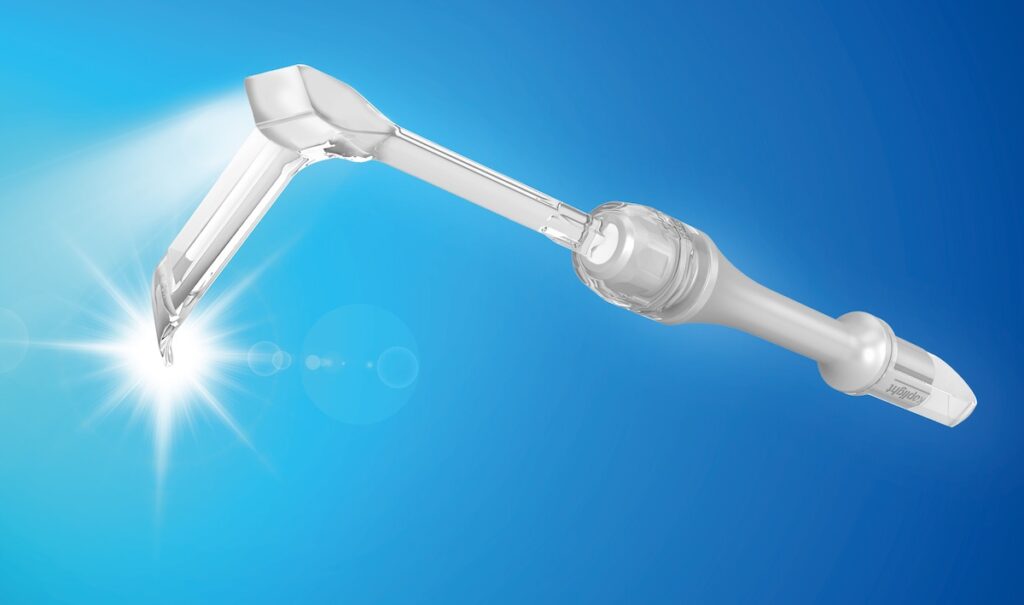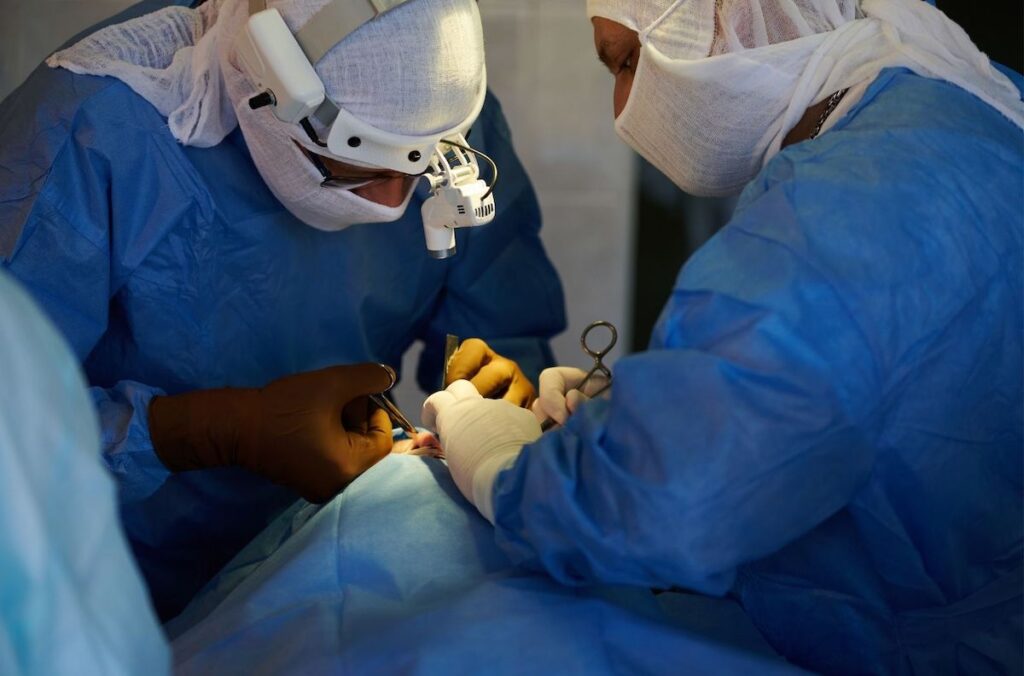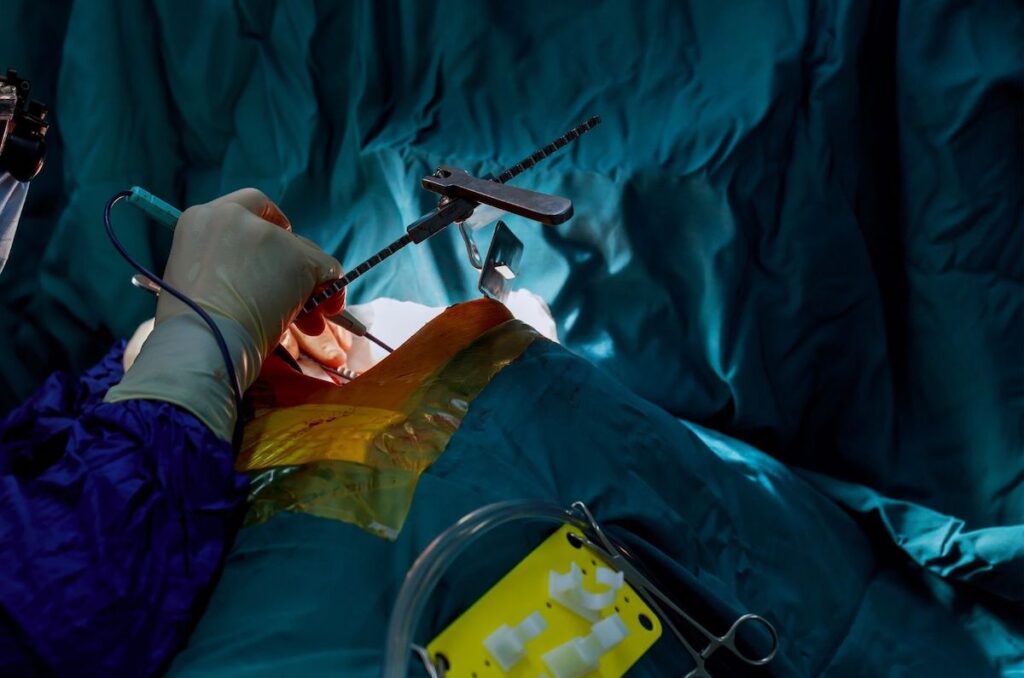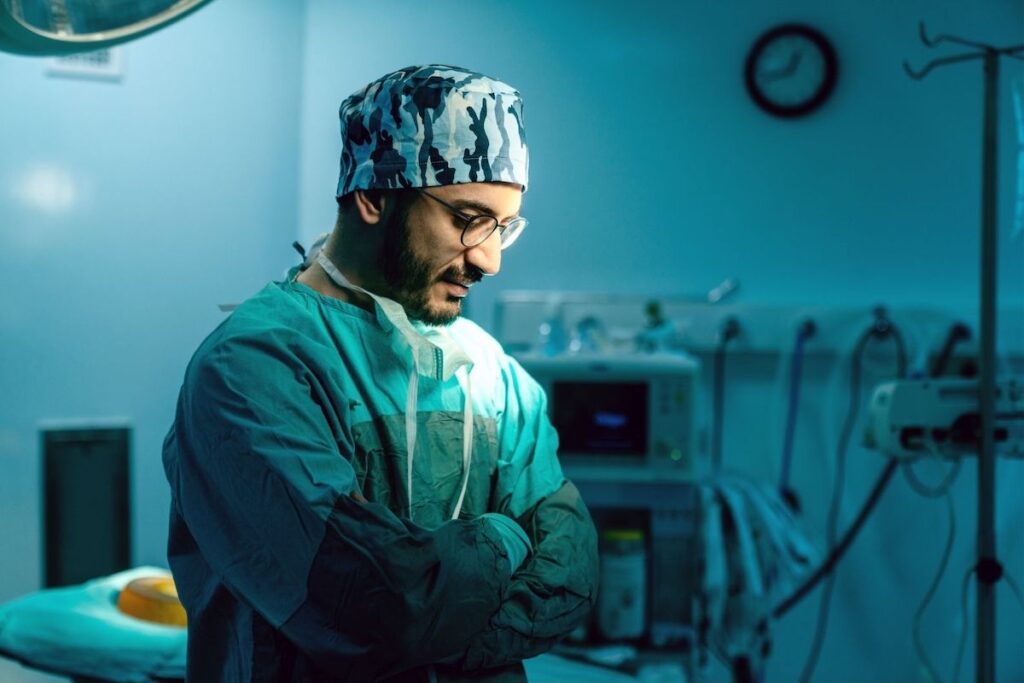Lighted retractors (or light retractors) are surgical tools that both separate bodily tissues and provide light inside the bodily cavity.
This light feature gives the surgeon greater visibility as it holds body parts open, which is the conventional function of surgical retractors. Lighted retractors also eliminate or reduce the need for secondary light sources. In tight spaces, such as with oral surgery, or smaller areas, as with breast surgery, these features are especially valuable.
Background on lighted retractors
Lighted retractors are relatively new in surgery. The earlier versions in the mid-1970s used bundled fiber optic cables.
Modern, handheld retractors are portable, battery-operated tools.
Light retractors improve the surgeon’s posture, reduce eye strain, decrease surgical time, and provide fewer distractions. Some of the setbacks include durability and longevity compared with conventional metal retractors.
Working with operating room light
There are four main operating room lighting methods:
- Standard lighting, such as overhead lighting
- Headlights or headlamps
- Lighted instruments
- Operating microscopes
Retractors and light issues
Cabled fiber-optic retractors followed most of principles for an ideal light source:
- Central in the surgeon’s field of vision
- Illuminate with enough intensity
- Penetrate deeply
- Maintain a cool temperature
- Not hinder the surgeon’s mobility
The cable aspect, however, ran into trouble with the last two aspects.
The wires and size could get in the way of a surgeon’s work. And the head from the cables posed a burn hazard.
Battery-powered light retractors neatly resolved these problems. These are cordless and they use bright, low-power-demanding LED lighting.
They’re also disposable, decrease back and neck pain, as well as eye strain, and create fewer distractions. In fact, their materials may enable less distraction than conventional metal retractors as they have a low profile on medical imaging.
Types of lighted surgical retractors
Lighted surgical retractors broadly come in two forms:
- Older-style lighted retractors have a fiber optic cable attached to a halogen, xenon, or LED light source.
- Cordless retractors typically have an integrated, battery-powered LED light source.
Battery-powered light retractors are made of plastic and may have disposable blades. Cabled retractors are made of metal, can be sterilized for reuse, and have a fiber optic port that enables lighting.
Lighted retractors are widely used in plastic surgery, abdominal surgery, neurosurgery, and orthopedic surgery. Some also are named after their inventors, as with conventional retractors (like the Ragnell, Volkman, Gelpi, etc.).
Tebbetts lighted breast retractors are expensive fiber-optic devices, while Deaver fiber-optic light retractors are often used for deep abdominal and thoracic surgery. These are just two examples of many.
The Yasui koplight is a multi-purpose, high-grade plastic-based, battery-operated handheld retractor that can be used in a range of surgeries. This durable, cordless Japanese retractor represents the top of the line in newer models.

Benefits of lighted retractors
As mentioned, light retractors offer a range of benefits. Let’s look at this in deeper detail.
Improve the surgeon’s posture in the operating room
Ordinary lighting systems provide light to a wide field of view. It’s difficult for the beam of light to reach deep tissues in this case.
The surgeon needs to change their angle or posture many times to improve their line of sight. Lighted retractors give a greater field of vision and less need to adjust the body.
Less neck fatigue for the surgeon
Surgeons tilt their heads to reach certain body parts or improve sight. This practice leads to a greater risk for neck disorders. Among the many neck problems, cervical disk herniation is the worst. This usually is attributable to poor posture. One detailed study applied MRI and found this issue among plastic surgeons.

Headlight systems use a somewhat heavy device (~200 g) on the surgeon’s head, placing a burden on their neck. With light retractors, lighting control is transferred to the surgical assistant.
Even if the surgeon controls the lighted retractor, the burden is a comparatively minor repositioning.
Fewer distractions in the operating room
Distractions in the operating room lead to worse outcomes. It takes considerable time to regain attention after it’s been lost. A study found a 1-minute distraction could lead to a 23-minute delay.
Phone calls during surgery or switching the lighting angle are common distractions. These seemly simple actions can put the patient at risk.
Nonetheless, light retractors are placed in the surgical field once the surgery starts. With these tools, you can minimize effort and distractions.
Improve eye strain
A low and/or very intense lighting source can increase the surgeon’s eye fatigue. It seems contradictory, but very bright light can create glare, which impairs visual contrast.
Constant use of intense light can result in strain, fatigue, and headaches over the short term, and permanent eye impairment over the long term.
Light retractors don’t typically have adverse effects because they provide a focal light beam, and reflection on the surgeon’s eyes is less intense.
Decrease surgery time
Standard light adjustments are made roughly every 7 1/2 minutes during surgery. In 97% of cases, the surgeon has to pause to complete the adjustment.
With longer surgery comes higher risk. With light retractors, however, these distractions don’t happen. They are already inside the body and can be adjusted within seconds. They’re quickly moved and batteries can be changed out rapidly and safely in the best light retractors.

Disadvantages of lighted retractors
Light retractors do, however, have some shortcomings, especially the more elaborate, less-portable fiber-optic models.
Cost
Lighted retractor prices vary greatly depending on the type and whether they’re disposable.
Typically, they range $200-$1500. Additional costs, including sterilization and replacements can increase costs significantly. Complex light retractor systems can cost up over $10,000 when factoring in all the components and variables.
In private practice especially, this pricing may be a hurdle. But the upper and lower ends of the price spectrum represent very different types of devices.
That notwithstanding, metal retractors may have longer lives, but they still need to be sterilized. And, of course, they don’t offer the lighting, fatigue-reduction, and other benefits. Doctors or other purchasers should carefully weigh the pros and cons. In many cases, the benefits for surgeons themselves justify any price differences.
Long cables that interfere in the surgery
Some light retractors have fiber-optic cords that can interfere in the surgical field and irritate the surgeon. The fiber-optic cables can get tangled up and even trip nurses or technicians.
Furthermore, If the cords contact the patient’s skin, they can also lead to burns. This is why many of the new models are cordless and battery-powered.
Sterilization is not 100% effective
Light retractor manufacturers follow strict hygiene standards. These apply for sterilization and disposal. Incomplete sterilization, however, is still a problem for medical practitioners who extend the products beyond their limits.
Some manufacturers have designed sterile sheaths that can be integrated into the retractor blade and disposed of after surgery to bypass this problem.
Ultimately, though, it is the medical professional’s responsibility to strictly follow the guidelines and to use common sense.
Heat, burns, fire
Retractors using fiberoptic cables can reach up to 225°C (437°F) within 10 minutes, resulting in a burn injury within seconds. This can lead to first- and second-degree burns.
The burns and fires have been described with other lighted surgical devices and are integrally grouped in the operating room´s fire triangle of ignition sources (lighted devices are in this category), oxidizers, and fuel sources.
Given that fire threats are generally the result of fiber-optic xenon bulbs, LED light retractors are clearly preferable here. They basically remove all possibility, but it’s really an apples-to-oranges comparison. Fiber-optic units are a different breed.
Availability and surgeon experience
Hospitals have increased demands for advanced devices such as lighted retractors. Their own financial and human resources can prevent widespread use.
Additionally, loaning them increases expenses and adds administrative challenges. For this reason, not all hospitals have them and not all surgical trainees can use them. This is why you may encounter surgeons who aren’t familiar with them and who stick to their conventional metal retractors.
Education and distribution should continue to make light retractors more widely available, as costs remain reasonable.
You can see a light retractor in action in this video.
What to look for when choosing a lighted retractor
- Single-use devices or light retractor that integrate a disposable sheath to avoid surgical site infection.
- LED lighting instead of halogen or xenon light sources.
- Battery-powered light retractors are preferable because fiber optic cable retractors have heat-related risks and can obstruct operating procedures.
- Retractors with a smoke port and suction add-on to improve the visual field.
- An ISO-certified manufacturer with a proven record of safety and performance. As with any product, cutting corners with cheaper materials and less quality control creates major hazards. Products from advanced economies (Europe, Japan, North America, etc.) are preferable.
—
Learn more about the koplight™ surgical light retractor. Contact us at Yasui or download a brochure.

